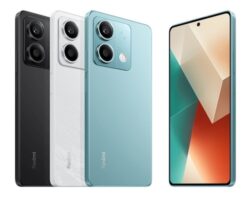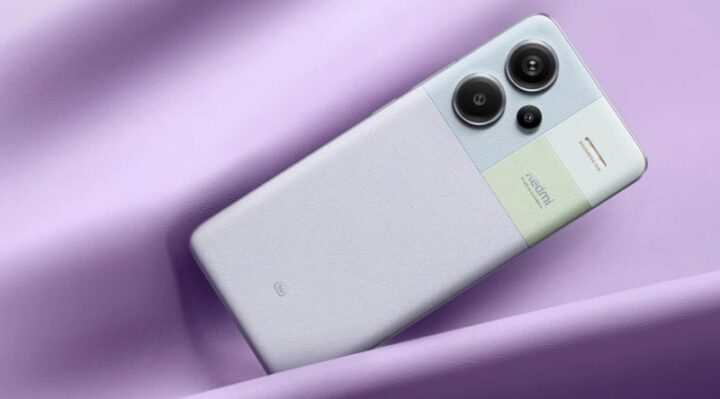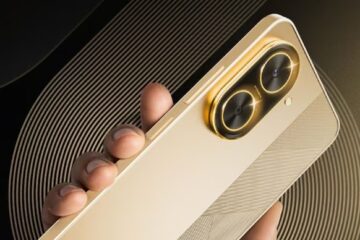Redmi Note 13 5G vs. CMF Phone 1: Comparison of Features, Prices, and Specifications


With the CMF Phone 1, Nothing’s CMF has entered the smartphone market. The first reasonably priced mid-range smartphone in Nothing’s lineup is the CMF Phone 1. The phone, which costs less than Rs 20,000, is up against stiff competition from Redmi, Realme, and Vivo, three other well-known brands in the same market.
Xiaomi has succeeded to create a more affordable product by contrasting the features of the CMF Phone 1 and the Redmi Note 13 5G in this post.
CMF Phone 1 vs Redmi Note 13 5G: Specs at Glance
| Smartphone | 6GB+128GB | 8GB+128GB | 8GB+256GB | 12GB+256GB |
| CMF Phone 1 | Rs 15,999 | Rs 17,999 | NA | NA |
| Redmi Note 13 5G | Rs 16,999 | NA | Rs 18,999 | Rs 20,999 |
When comparing the 6GB+128GB version of these two phones, the CMF Phone 1 is less expensive. Readers should be aware, nevertheless, that a charging adapter is not included in the retail package of the CMF Phone 1. The CMF Power 33W Fast Charger is priced at Rs 1,299 by the firm. If someone doesn’t already have a USB Type-C adapter, this will cost extra.
Furthermore, since the Redmi Note 13 5G was introduced half a year ago, there’s a good chance you could be able to purchase it during a sale at a lower cost.
CMF Phone 1 vs Redmi Note 13 5G: Design
- The CMF Phone 1 includes a removable back panel that is fastened to the chassis using four visible screws. An accessory point on the bottom right of the gadget is where users can connect a lanyard, stand, or card case. The smartphone is IP52 certified and weighs about 200 grammes. Four colour variants are available: Orange, Blue, Light Green, and Black. The colour variations in orange and blue include a vegan leather finish.
- The IP54-rated Redmi Note 13 5G is around 175 grammes in weight. It comes in four colours: Chromatic Purple, Arctic White, Stealth Black, and Prism Gold. It features a glass back.
The CMF Phone 1 has a distinctive design because to its removable back panels and visible fasteners. Additionally, customers have the opportunity to use many accessories with their phones thanks to the Accessory Point. In terms of design, the CMF Phone 1 comes out on top.
CMF Phone 1 vs Redmi Note 13 5G: Display
- The 6.67-inch Super AMOLED LTPS screen of the CMF Phone 1 has 8-bit colour depth, an adaptive refresh rate of 120Hz, Full HD+ (1080 x 2400 pixels) resolution, pixel density of 395 ppi, usual brightness of 700 nits, peak brightness of 2000 nits, PWM dimming of 960Hz, contrast ratio of 10,00,000:1, and compatibility for HDR 10+.
- The Redmi Note 13 5G boasts a 6.67-inch AMOLED screen with 10-bit colour depth, 50,00,000:1 contrast ratio, 1920Hz PWM dimming, Full HD+ (1080×2400 pixels) resolution, 500nits normal brightness, 1000nits peak brightness, and Corning Gorilla Glass 5 protection.
With a peak brightness of up to 2000 nits, the display on the CMF Phone 1 is brighter. Conversely, the Redmi Note 13 boasts a 10-bit display and Corning Gorilla Glass 5 protection. Thus, it is a matter of personal preference; if you are concerned about high peak brightness values, you may want to consider the CMF Phone 1.
CMF Phone 1 vs Redmi Note 13 5G: Performance
- The MediaTek Dimensity 7300 CPU, which was produced using TSMC’s 4nm process, powers the CMF Phone 1. It features 128GB UFS 2.2 storage, up to 8GB LPDDR4X RAM, and an integrated Mali-G615 GPU.
- The MediaTek Dimensity 6080 SoC, which powers the Redmi Note 13 5G, is produced using TSMC’s 6nm technology. The device includes 512GB UFS 2.2 storage, a Mali G57 GPU, and up to 12GB LPDDR4X RAM.
The CMF Phone 1 has an advantage over the competition since the MediaTek Dimensity 7300 operates better than the Dimensity 6080. Examine the artificial benchmark results for these two devices.
CMF Phone 1 vs Redmi Note 13 5G: Software
- Pre-installed on the CMF Phone 1 is Nothing OS 2.6, which is based on Android 14. Three years of software support, including two Android OS upgrades, have not been promised by anybody.
- This year’s Redmi Note 13 5G sports MIUI 14, which is based on Android 13. The smartphone is now running HyperOS, an Android 14-based operating system, although the company’s update policy remains unclear.
NothingOS’s numerous useful customisations and widgets make the CMF Phone 1 the winner.
CMF Phone 1 vs Redmi Note 13 5G: Cameras
- The 50MP Sony IMX882 camera, which features an f/1.8 aperture, 1/1.95-inch sensor size, and electronic image stabilisation (EIS), is one of the two back cameras of the CMF Phone 1. A 2MP portrait camera with an f/2.4 aperture is included with it. The phone features a 16MP front-facing camera with an f/2.45 aperture and a 1/3.1-inch sensor.
- One of the three rear cameras of the Redmi Note 13 5G is a 108MP main camera with an f/1.75 aperture. It comes with a 2MP macro and an 8MP ultra-wide camera. The phone has a 16 megapixel front camera.
Compared to the CMF Phone, the Redmi Note 13 5G has a more flexible camera arrangement because to its ultra-wide camera. It also has an advantage over the competition thanks to a back camera with greater resolution.
Redmi Note 13 5G vs. CMF Phone 1: Battery & Charging
- The 5,000mAh battery of the CMF Phone 1 supports 33W rapid charging. Additionally, 5W reverse wired charging is supported.
- With support for 33W fast charging, the 5,000mAh battery of the Redmi Note 13 5G is available.
The battery specifications of the CMF Phone 1 and Redmi Note 13 5G are comparable. The Redmi Note 13 5G has an advantage over the CMF Phone 1 because the retail box lacks a charging adapter.
CMF Phone 1 vs Redmi Note 13 5G: Verdict
Thanks to its Accessory Point and detachable rear panels with visible screws, the CMF Phone 1 is a breath of fresh air. It includes NothingOS and one of the strongest processors in the market. The smartphone is a compelling option because of its 120Hz AMOLED display, large battery, and quick charging. But, the absence of a charging connector and an ultra-wide camera could turn off some potential customers.
Although it has a less powerful processor and the manufacturer hasn’t disclosed its software support strategy, the Redmi Note 13 5G is a more well-rounded smartphone. It has an IP54 dust and water resistance rating and an ultra-wide camera. It boasts an AMOLED display that runs at 120 Hz and is protected by Corning Gorilla Glass, but it also has an ordinary industrial design.


